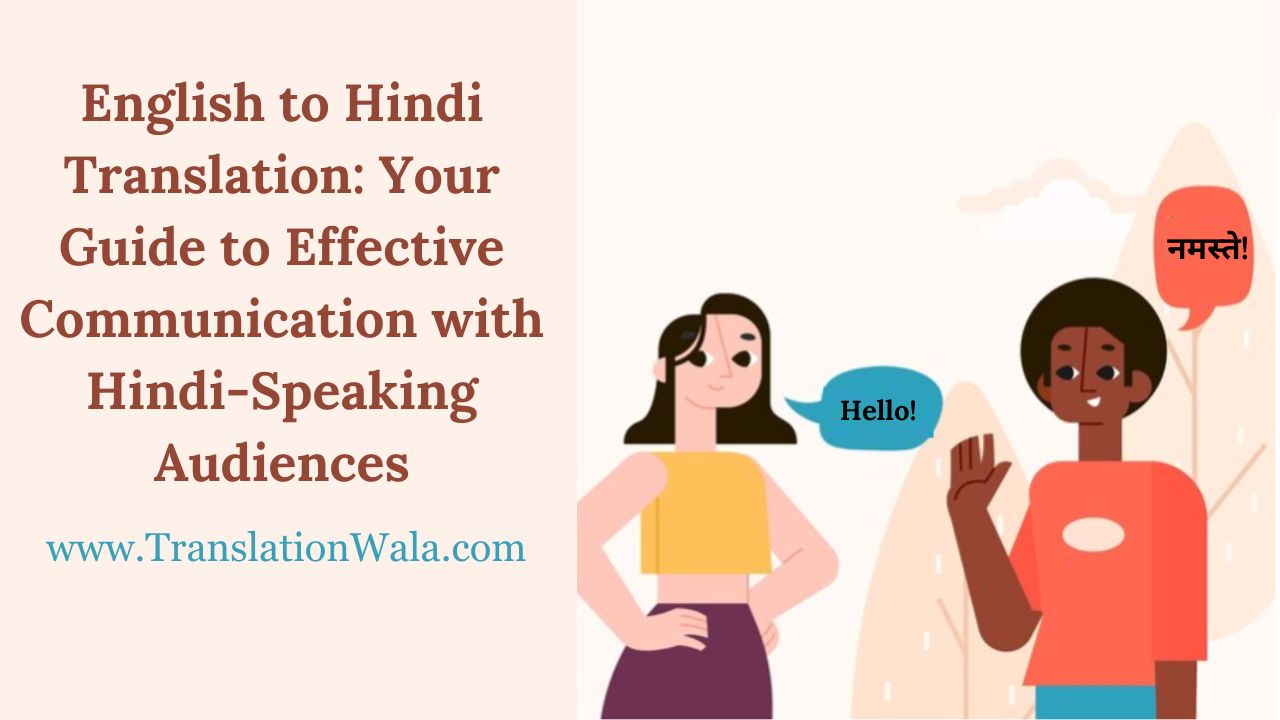In today’s linked world, it’s very important to be able to communicate clearly across language boundaries. English to Hindi Translation is very important in this case. This guide will help you succeed whether you’re a business trying to break into the Indian market or a person who just wants to meet with people who speak Hindi.
The Power of Hindi Translation
- Reaching a Wider Audience: India has the most people who know Hindi than any other country. When you translate your information, you open it up to a huge group of possible users and partners.
- Enhanced Credibility: By translating into Hindi, you show that you value the language and culture, which builds trust in your brand and makes connections with your audience stronger.
- Deeper Engagement: People naturally understand things better when they are spoken in their own language. Hindi-translated material hits home more strongly, which leads to more involvement.
Considerations for Effective Translation
- Accuracy and Precision: Make sure there are no mistakes in the copy. Any mistakes can cause confusion and make it harder to talk to each other.
- Cultural Nuances: In everyday speech, each tongue has its own phrases and culture meanings. For a translation to go smoothly, it’s important to know about the culture of the audience.
- Word Choice: Choose clear, simple language that is easy for your audience to understand. Don’t use too much technical words.
- Tone and Voice: Try to keep the tone and style of the original material when translating it.
Choosing the Right Translation Method
The best way to translate varies on what you need to do:
- Professional Translation Services: You might want to work with a English to Hindi Translation service to get the best quality and accuracy. Their experienced translators are experts in many areas, so you can be sure that the translation will be accurate and detailed.
- Online Translation Tools: There are a number of free and paid online translation tools available. These can help with simple versions, but they might not work well for more complicated material.
- Self-Translation: You can try to explain the information yourself if you know a lot of Hindi. To avoid misunderstandings, it is important to have a deep understanding of the language’s details.
Also Read: Precision in Practice: English to Telugu Translation Mastery
Streamlining the Translation Process
Here are some tips to help you get the most out of your translation:
- Define Your Target Audience: Who do you want to get in touch with? Knowing about their age, level of schooling, and where they live helps the translator make the most of their words.
- Provide Clear and Concise Content: It’s hard to translate words that aren’t clear or are too complicated. Set up your information so that it is clear and to the point.
- Glossary Creation: If your content uses certain words, make a dictionary of those words and their correct Hindi versions so that they are used consistently in the translated material.
- Leverage Technology: When working on new projects, use translation memory tools that save previously translated words. This will save time and make sure that everything is consistent.
Beyond the Basics: Advanced Techniques for Effective Translation
For truly powerful conversation, think about these other options:
- Localization: Don’t just translate the words word for word; change the content to fit the tastes and norms of the target society. This could mean using local slang or changing the jokes to make it easier to understand.
- Transcreation: Think about transcreation for artistic content like taglines or marketing materials. In this step, the original message is rethought in a creative way while keeping its main points for the intended audience.
By following these tips and using these advanced methods, you can get the most out of English to Hindi Translation and meet with people around the world who know Hindi. Don’t forget that good translation is an investment in building trust, reaching more people, and being successful in the global market.
